Yesterday I went to Nia for the first time in three and half weeks! (Who’s counting?) Woohoo!
I took the first 15 minutes of Judy Newton’s class that she was teaching for me at The DanceSpace.
It was astonishingly beautiful to see all the big hearts shining out through people’s faces as I entered the studio. I was deeply moved to be held in the space of Nia, the space of the joy of movement — ever our foundation — the space of community, the space of healing, the space of the holy body.
I felt tentative and wide-eyed, like a newborn in a big, new world.
I felt worried about how little I might actually be able to do. I worried my breath could be as restricted as it was in 1995 when I first found Nia, when, due to the immense depth of asthma at that time, I was limited to the tiniest micromovements.
What a blessing to find it not so!
What a blessing to feel freedom in my body — just as it is.
My Nia practice during those 15 minutes was necessarily contained and careful.
I moved in natural time. I went slowly. I let myself be guided by my breath and the voices of my body. I sensed and chose my level of intensity. I didn’t compare myself to anyone else. I asked my body if she was experiencing the joy of movement. When she said, “Yes,” I sustained what I was doing. When she said, “No,” I tweaked what I was doing until I felt the distinct sensation of my body relaxing and saying, “Yes.”
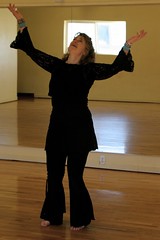
What a relief to feel my fears and assumptions fall away. What a relief to be in the present, in the realm of the body — just as it is.
The focus of class was centering. As I moved, I felt aware of the great and grave import of centering. Through centering we also become grounded. We ground by doing what gravity does. We ground by dropping our body center so that it connects to the center of the Earth.
As in gravity and the ground reaction forces in physics, there is an ongoing energetic wave between my body center and the center of the Earth that I can ride and be exquisitely supported by.
The Earth is big. The Earth is the biggest ally we have in the physical realm and the biological realm. When I connect my little center with the center of the great, big, beautiful, spinning, holy Earth, I have so much more available for navigating this strange, confusing, wondrous, big, mysterious life in my body — just as it is.
(Seventh in a series about healing pneumonia and asthma.)
Tags: Dancing Through Life · Essays on Self-Healing · Lungs · Ongoing Nia Classes
Here are some of the books I’ve been reading during this period of healing.

The Epic of Gilgamesh, a new English version by Stephen Mitchell
A beautifully written and poetic, if academically incomplete, blend of versions from a two thousand year period weaving the heartbreaking love story of Gilgamesh and Enkidu. We are living every day this same heartbreaking love story between our magnificent, grief-defended and feral civilized selves and the great natural cultures of animals and plants in which we humans can also live, love and be a blessing.
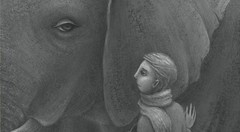
The Magician’s Elephant, by Kate DiCamillo, illustrated by Yoko Tanaka
The dream time and the natural world conspire to seep into grief-stricken Eastern Europe, mysteriously and intimately weaving together the hopes and dreams of humans, elephants, dogs, gargoyles and snow.
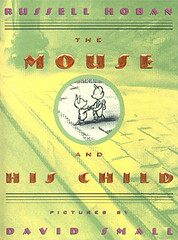 The Mouse and His Child, by Russell Hoban, illustrated by David Small
The Mouse and His Child, by Russell Hoban, illustrated by David Small
The courageous and beautiful life of the being we call the mineral tin as it manifests in this strange and heartbreaking world of mechanization, betrayal, love and the universal longing for home.
The Miraculous Journey of Edward Tulane, by Kate DiCamillo, illustrated by Bagram Ibatoulline
The courageous, patient and beautiful life of matter has its heart cracked open again and again as it is carved by the winds of expectation, loss and possibility.
The Mysterious Benedict Society, by Trenton Lee Stewart, illustrated by Carson Elli
Four kids, like four chambers of one heart, learn to love and trust their own and each other’s uniquenesses, courageousnesses and weirdnesses as together they attempt to crack open a Big Brother-like world so that more life can sprout forth.
Tags: Dancing Through Life · Essays on Self-Healing
November 2nd, 2009 · 6 Comments
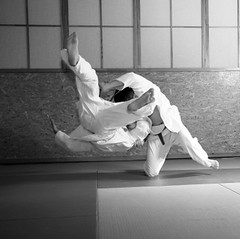
Why did the universe kick my ass?
It matters and it matters not.
The mind, in its constant seeking motions, naturally wants to know why. Let the mind move, look, see, be curious. But also consent to what is.
These are some reflections. None is the answer. The mystery — and the response to the mystery — are all that is.
Why did the universe kick my ass?
Because I needed to slow down.
Because I need to grieve.
Because I need shabbos. I need the shabbos that visits me every two seconds after I exhale. I need the shabbos of the seventh day.
Because I need to unchoose grasping again and again — even after my heart’s desires. I may or may not need to let go of my heart’s desires, but the more I let go of grasping, the more I will live. I desire to be the drowning person who by letting go into the dark deep finds herself floating in the ebb and flow of the great ocean of love.

So I can go deeper and learn more about the respiratory pattern that echoes every day between duty, obligation and responsibility and true presence, self-expression and the mystery.
Because the unmetabolized grief of the last 5,00o years of traumatic human flight away from the unbearable loss of forgotten, ancient, beautiful and small, natural cultures of all our ancestors, cultures that embraced the indigenous vitality of all things in such a way as to keep life alive rather than trample the beautiful ground of the earth and our bodies is so incredibly overwhelming.
Because I need to make offerings. Yes, I was willing to be the offering, but now it would be good to make some beads.
So I could really learn what my teacher Martín Prechtel has been saying all these years.
So I could learn to listen and feel, love and heal my body at a deeper place than I ever could before.
So I can bless everything.
Because life is asking me to get really good at cracking open my heart, to get really good at growing my attention, and to get really good at exhaling completely again and again and again into the Island of Now the Ocean of All Time.
Aahhh.
(Fifth in a series on healing pneumonia and asthma.)
Tags: Dancing Through Life · Essays on Self-Healing · Lungs · Ongoing Nia Classes
November 1st, 2009 · 1 Comment
I’m very happy to report I’m now medically stable. What a relief. I’m no longer afraid to sleep for fear of not being able to breathe. Yesterday, I spent the whole day out of bed! I can talk now, but I sound like a funny, chipmunkish, Marlon Brando-esque squeaky frog.
Last night, I was awake again for several hours speeding on prednisone. I listened to the music in my head. The Beatles sang “All You Need Is Love.” I did the “Body, I Love You” practice with difficulty. Monkey-mind and prednisone are are great, mutually distracting playmates.
I practiced in a new way.
I said, “Grief, I love you.”
Each time I said, “Grief, I love you,” my shoulder blades immediately warmed and filled with the energy of attention, and the warmth wrapped around through the bones of my chest, clavicles, sternum and ribs, then seeped into my lungs and heart.
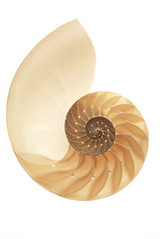
Today, I began doing the Nia Five Stages of Self-Healing movement practice on my bed. The Five Stages of Self-Healing is based on the developmental movements we all did as infants and kids.
Until now, I’ve been afraid I couldn’t breathe well enough in a horizontal position to attempt the practice. When the body is horizontal, the lungs must work harder because gravity makes the chest and ribs weigh more. (Of course, now I realize that I could’ve modified the practice and done it vertically.)
As I began, I felt fear. I felt afraid to move.
Over the last three weeks, although everything has been very body-centered, out of necessity with my breathing so limited, I have done only the most basic movements: eat, rest, pee. I have been doing the vast majority of my moving in the energetic realms. I was shocked to realize how still I’ve been physically.
I wept. I felt afraid I couldn’t do the Five Stages. I felt didn’t deserve to exist on the face of the planet.
Then something said, “Sense and feel, don’t think.”
I entered into the practice of Embryonic. I wept, then I played and explored. Delicious. I was surprised by how much I could do and how much vitality was there waiting for me!
Over the last three weeks, everything has been so very serious — life and death and all that. What a blessing it is now to feel the spirit of play come in. What a blessing it is now to feel room in my body for some freedom.
Grieve, Play, Love, Fear, Peace. This body is a gift.
(Fourth in a series about healing pneumonia and asthma.)
Tags: Dancing Through Life · Essays on Self-Healing · Lungs · Ongoing Nia Classes
October 31st, 2009 · 3 Comments
Nia student Isabelle Alzado wrote me a few days ago and made this request:
“I love you and ask you to take your turn to listen to your body – the way Nia shows us – the way you show us [to say], ‘Body . . .'”
So at Isabelle’s request, every night, as I ebb and flow between sleep and wakefulness, revved up on prednisone while savoring the sweet taste of each breath in my lungs, I do the practice Nia teaches us.
I address my body by first saying, “Body.” Thus I awaken my relationship with my body, I ask for my body’s attention and I let my body know I’m now giving her my attention.
I speak aloud, so my body can hear me, but softly, so as not to disturb my sleeping husband, Richard, who, angel that he has been through all this, needs his rest, too:
“Body, I love you.
Body, I love you.
Lungs, I love you.
Bronchi, I love you.
Bronchioles, I love you.
Alveoli, I love you.
Alveolar capillaries, I love you.
Cilia, I love you.
Immune system, I love you.
Prednisone, I love you.
Body, I love you.”
And even,
“Pneumonia, I love you.”
This practice carries me every night like a small boat, guiding me through what David Whyte in his poem, “The Well of Grief,” calls the black water, the place we cannot breathe and the source from which we drink.
It’s a peaceful practice and a profound practice, a loving and heartbreaking practice, a hopeful practice. It’s a practice about learning to approach the holy temple of the body again and again. Learning to approach the body with more and more courtesy, more gradualness, more respect. It’s a practice of letting go and receiving more intimacy with the body, more intimacy with the moment, more intimacy with the Mystery.
Strangely and humorously, this serious and beautiful nightly ritual of blessing and navigating is regularly punctuated by Michael Jackson singing in my head, “Man In The Mirror” (click here to listen). It’s literally part of the wake up call, facilitated by speedy prednisone. Wake up. Look at myself. Make that Change.
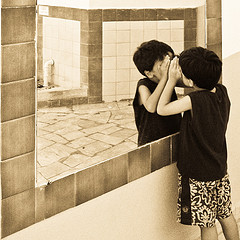
Man In The Mirror
Gotta make a change
For once in my life
It’s gonna feel real good
Gonna make a difference
Gonna make it right
That’s why I’m starting with me
I’m starting with the man in the mirror
I’m asking him to change his ways
And no message could have been any clearer
If you wanna make the world a better place
Take a look at yourself and then make a change

You gotta get it right, while you got the time
‘Cause when you close your heart
You can’t close your mind
Then you close your mind
Oh no, Oh no, I’m gonna make a change
It’s gonna feel real good
Sure mon
Change!
Just lift yourself
You got, you got to move
You got to stand up, stand up, stand up
Make that change
Stand up and lift yourself, now
Make that change
You know it, you know it, you know it, you know
Change!
Make that change.
— Michael Jackson
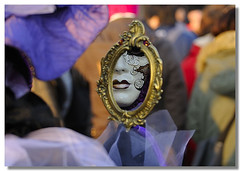
What is the change?
It is unfolding, and as it does, I will do my best to witness, see, learn and move.
The essence of the call to change is this: To sense, again and again, the space of the infinite moment that exists between the exhale and the inhale.
The call to change is this: To remember, again and again, that the infinite moment between the exhale and inhale is itself the very threshold between life and death, nestled naturally within in the body. That life and death are the same, brother and sister, warp and woof of the fabric of the sweet breath of the holy. That we naturally dwell upon the threshold between life and death 25,000 times every single day.
The call to change is this: To receive in the body the gift and the invitation that the body itself is offering us every two seconds. The infinite moment after exhaling is a still point where the dynamic homeostasis of the body — itself a mysterious dance — resets. The nervous system, and hence the whole self, can renew. The parasympathetic nervous system (or relaxation response) comes forth to balance our habitual fight or flight away from where we are. We are brought completely into the present of all that is.
The call to change is this: The still point is a biological and spiritual field in which to rest, to be, to die and be reborn again wholly new, whatever that means, wholly changed, perhaps utterly transformed.
The call to change is this: To feel the sensation of a shabbos that arrives at the completion of each breath 25,000 times every single day, inviting us to stop — to land and rest beneath the wings of the Mystery, before the next holy breath arrives in the lungs to fill the wings of the heart for the body, for the soul and for the world.

The call to change is this: Shimmering holy amnesiacs that we are, let us remember that we forget, that we are dutifully pulled, for better and worse, into, as William Stafford said, “a pattern that others made . . . in the world, and [so] following the wrong god home we may miss our star,” and in our busynesses or distraction or well-crafted grief-defense mechanisms may cast off the gift the body is giving us.
The call to change is this: To practice ever-deepening courtesy to the body. To choose to approach the body with gradual and loving sensory awareness. To unchoose the terrified and terrifying conditioning of the last five thousand years that has told us the body is a slave to be ridden to work and leisure and to choose instead to sense, feel and be the body.
The call to change is this: This is the work we do inside the holy of holies, within the temple called the body. This is the abode where the vast infinite and intimate moment between exhaling and inhaling and between the visible and the invisible resides.
The call to change is this: Be in the body and the immense Mystery that is there. Stay. Say yes. And somehow, be at home, here, now, for one more breath, one more prayer, one more expression of the love and life that, baruch hashem, we have each been given.
The call to change is this: I desire never to forget or abandon the gifts my body is continuously offering. I desire to always live and love courageously, courteously and beautifully, in my body, and therefore, in and for the Mystery.
Body, I love you.

(Third in a series about healing pneumonia and asthma.)
Tags: Dancing Through Life · Essays on Self-Healing · Lungs · Ongoing Nia Classes
October 30th, 2009 · 9 Comments
It’s weird to be back on all the asthma meds again — high levels of prednisone and doing the nebulizer four times a day — after all these years baruch hashem of feeling so healthy. But I bless all these drugs which allow me to live. There are big differences now, compared to when I was sick in Portland for seven years.
Even though being unable to breathe leads to anxiety, this time I have been steady, grounded and centered.
Somehow, for the first time in my life, just by sustaining my commitment to possibility, I have discovered how to weep in such a way as not to aggravate my precarious breathing situation — very deeply and very quietly. Grief is associated with the lungs, and this session of Martin Prechtel’s school, Bolad’s Kitchen, in particular was more grief-stricken than usual.
Somehow, for the first time in my life, I have become willing — although definitely not desiring — to die of lung problems, of which, before, I had been terrified.
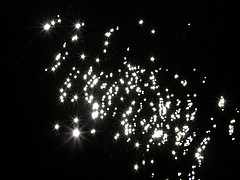
The Well of Grief
Those who will not slip beneath
the still surface on the well of grief
turning down to its black water
to the place that we can not breathe
will never know
the source from which we drink
the secret water cold and clear
nor find in the darkness
the small gold coins
thrown by those who wished for something else
— David Whyte
Even though Martín has been teaching this for so many years, for the first time I could understand and feel it on the inside, in body and soul:
I feel the utter willingness to die at my appointed hour in order to feed something else, hitting the ground as beautifully as I can, making an echo as big as possible in order to feed a time beyond my own.
Somehow, I could feel the truth and the nobility of it, like a great horse beneath my body carrying me either to the other side or through the current conundrum into more life, either way, her big muscles, natural self and snorting breaths carrying me in whatever form through the world.
Consequently, all three times I have gone to ER I have dressed in my nomadic gypsy finest — velvet, leather, silk, red shawl, beads (the indigenous version of “It doesn’t matter how you, feel it’s how you look that counts — and, dahling, you look mahelous!”) so that if my appointed hour came, the seed pod of my being would be decked out, ready with nourishment for the holy and ready to sprout into the next thing, and if the appointed hour passed me by, then I could just be stylin’ and perhaps bring a little more pleasure and and little more hope to myself and those around me.

Throughout this time, I’ve been silently singing Rabbi David Zeller’s (zt’l) “I Am Alive” to which he wrote the lyrics as he was dying in 2007. I sing it as a prayer to ride, and now that I’m home I’m learning the Hebrew (thanks, Avara), and look forward to just resting as he sings it to me on my iPod.
You can listen to some of it at http://davidzeller.org/aliveness/ And you will hear it in Nia classes at The DanceSpace this week and next.
I Am Alive
Lie-lie-lie-lie, lie-lie-lie-lie-lie-lie.
I am alive.
And who is this aliveness I am?
Is it not the holy, blessed one?
Lie-lie-lie-lie, lie-lie-lie-lie
Ha lo chai ani.
U mi hu ha chai yut sheli?
Ha lo ha borei yit barah.
— David Zeller, zt’l
 The lungs are called the bronchial tree. They are a Tree of Heaven because the tree is rooted in the air above. As we breathe, the air flows down — through the trunk of the throat and bronchii into the center of the chest, nestling up next to the heart. From there, bronchial tree branches deeply into the body. The smallest twigs are called bronchioles, and the end of which are the alveoli, where gas exchange takes place. The alveoli look like bunches of grapes! There are about 600 million alveoli in the body.
The lungs are called the bronchial tree. They are a Tree of Heaven because the tree is rooted in the air above. As we breathe, the air flows down — through the trunk of the throat and bronchii into the center of the chest, nestling up next to the heart. From there, bronchial tree branches deeply into the body. The smallest twigs are called bronchioles, and the end of which are the alveoli, where gas exchange takes place. The alveoli look like bunches of grapes! There are about 600 million alveoli in the body.

Nestled underneath the lungs and heart is the muscle of the respiratory diaphragm. These strong double parachutes push the air in and out of our lungs about 25,000 times per day. Their tendon attaches on the lumbar spine.
The diaphragm is the muscle that breathes, laughs and weeps. Breathes, laughs and weeps.
Martín Prechtel tells us the Tzutzujil Maya of the highlands of Guatamala advocate laughing out of one eye and crying out of the other.
Out of the fruit of the alveoli, the clusters of grapes inside the chest, we can add our joy, laughter and tears to the mix as we crush the grapes with our feet, the hands that touch the Earth, and make ourselves, body, mind, heart and spirit, into god’s fine wine to feed the heart of the world.
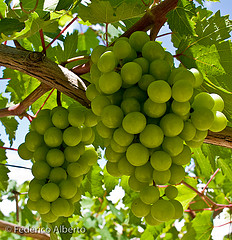
(Second in a series about healing pneumonia and asthma.)
Tags: Dancing Through Life · Essays on Self-Healing · Lungs · Poem of the Week
October 29th, 2009 · 1 Comment
(First in a series about healing pneumonia and asthma.)
Last night, my friends Sharon and Ronen came over to visit. They brought chicken soup. Ronen read this poem.
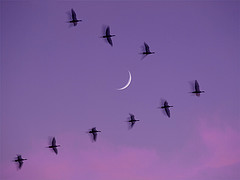

Wild Geese
You do not have to be good.
You do not have to walk on your knees
for a hundred miles through the desert, repenting.
You only have to let the soft animal of your body
love what it loves.
Tell me about despair, yours, and I will tell you mine.
Meanwhile the world goes on.
Meanwhile the sun and the clear pebbles of the rain
are moving across the landscapes,
over the prairies and the deep trees,
the mountains and the rivers.
Meanwhile the wild geese, high in the clean blue air,
are heading home again.
Whoever you are, no matter how lonely,
the world offers itself to your imagination,
calls to you like the wild geese, harsh and exciting –
over and over announcing your place
in the family of things.
— Mary Oliver
I wept, eyes fully open. I wept, fully alive.
I have pneumonia. “Pneumonia” from the Greek, pneuma, “soul, spirit, breath.” Perhaps akin to Latin, numina, “mystery, holy.” The strange and beautiful grief of the world has now made a nest in my lungs.
This poem opens the door in my chest into what my body has been feeling.
See the great-hewn door frame, set in its threshold, wide and high, mounted in mud brick walls. Smell the cedar. Smell the earth. See the rounded double doors, whose tops who remember being green and swaying in the sky. See the spiral door handles of meteoritic iron. Now see the doors open, and look through them — look into the whole night sky and out to the beach of stars.
Utterly let go of life or death or hope and utterly rest in the arms of the Mystery. Let go of seeking, and simply be in the body, simply say Yes, and within that vastness, moving across landscapes, feet on the ground and yet walking amid the stars, somehow head home.
Ronen and I agreed we could never hear the poem too many times.
I feel loved. I am grateful. I feel the love of my husband, family and friends, and the strange, wide, yet so intimate love of the Mystery.
“You only have to let the soft animal of your body
love what it loves . . .
“Whoever you are, no matter how lonely,
the world offers itself to your imagination,
calls to you like the wild geese, harsh and exciting –
over and over announcing your place
in the family of things.”
Tags: Dancing Through Life · Essays on Self-Healing · Etymology · Lungs · Poem of the Week
Every Nia class has a focus. The focus of today’s class was “Beginner’s Mind,” inspired by Nia co-creator Debbie Rosas’ recent telecourse on that topic. (You can listen to a recording of Debbie’s telecourse at www.nianow.com/telecourses.)
In his classic book, Zen Mind, Beginner’s Mind, Suzuki-roshi tells us, “If your mind is empty, it is always ready for anything. In the beginner’s mind, there are many possibilities; in the expert’s mind there are few.”
The music for today’s class was “Love,” The Beatles “Love.”
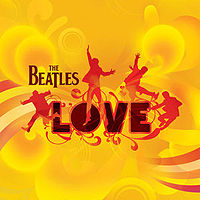
Beginner’s mind. Love.
Beginning again, this moment, in love. Again this breath, in love. Again this heartbeat, in love. Life itself is again walking toward me, hands open, new, ancient, generous — in love.
I had never danced to or taught this music before today. Beginner’s mind. Love.
Tomorrow, I fly, again, to New Mexico with my husband, Richard, as we do twice a year, to study, again, with our teacher, Martín Prechtel, for ten days in his school Bolad’s Kitchen, and attempt again with my fellow holy amnesiacs to re-member the flowering of the holy into that which we call the “Island of Now in the Ocean of All Time.” As Sukuki-roshi said, “The world is its own magic.”
Nia classes continue at The DanceSpace with the beautiful Melanie Freeman and the beautiful Sarah Rose Marshank. I’ll be back Tuesday, October 20 to begin again, in love.
Tags: Dancing Through Life · Ongoing Nia Classes
This September I turn 50!
Thank you to my parents for giving me life: my courageous, beautiful my mother and my grief stricken, brilliant father. Thank you to my steadfast grandparents and their brave parents, and all my ancestors — from Alsace, New Iberia and Iowa; Biddenden, Oshkosh and Bohemia; from Minnesota, Belfast and Schleswig-Holstein, and all the places in between I never knew or have forgotten.
This year, I have two dreams for my birthday:
1) MY DREAM 50th BIRTHDAY PARTY: Nia co-creator Debbie Rosas teaches Nia for my students and me at The DanceSpace in Ashland, Oregon.
2) MY DREAM BIRTHDAY PRESENT: I manifest my childhood dream of learning all the languages in the world.
If you are so moved, please participate with me in one or both of my dreams.
Here’s how . . .
 MY BIRTHDAY PARTY
MY BIRTHDAY PARTY: Come celebrate with me! On Saturday, September 26
, Nia co-creator, Debbie Rosas, will teach for the first time ever in Ashland, leading a master class and a workshop at The DanceSpace. (Visit
www.niasomoves.com for info and to register.)
When I asked myself, if I could do anything for my 50th birthday, what would it be, I kept seeing Debbie teaching my Nia class, in my space, for my students and for me.
Now that’s what I call a birthday party!
Thank you, Debbie, for helping me manifest my 50th birthday party dream!
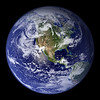
MY BIRTHDAY PRESENT: If you were planning on buying me a present for my birthday, please consider this instead: In honor of my ancestors and in honor of all people who have roamed, settled, fled, migrated, stayed, lived and died, eaten, slept, wept, laughed, loved, hated, hoped, dreamed, sensed and breathed — please consider contributing money toward my purchase of Rosetta Stone language programs. $2, $10, or whatever you might have spent on a card or gift. Maybe, god willing, over the years, I can learn all 30 of the languages they have available.
Why?
Read on . . .
MY DREAM OF ALL LANGUAGES
When I was a little girl I had a dream — a dream of learning all all the languages in the world.
In our house on State Street in Brooklyn, we had a globe with brightly colored countries, deep, bright blue oceans — and best of all, mountain ranges in raised relief. I loved this globe. I would kneel, leaning my elbows on the wide, low map cabinet my mother had refurbished for my father to keep his photographs in, and gaze at it. I loved to touch it, spin it, feel it. I didn’t know the names then, but I loved to touch the Arabian Peninsula and dip down into the Reed Sea, up again into Africa, to touch the Himalayas, the Cacaucuses, mountainy Sumatra, and the spine of the Rocky Mountains down into the Andes.

I loved to wonder about each place on the globe and I tried in my mind’s eye to zoom into each place as though landing there from outer space. I wanted to stand on every spot in the world, or at the very least, go to every country, and imagined that some day I would. I imagined standing, simply standing, on the earth in each place, feeling and seeing the ground and what lived there — people, trees, grasses, animals, sunlight, shadows, roads — and smelling the smells of that place.
And as I imagined standing on the ground in the places we call south central Africa, Saudi Arabia, South America, Polynesia, I dreamed of learning the language of every place, because if I went to each place, I would need to know the language.
And in my imagination as I stood on the earth in south central Africa, I could feel the language of that place — and of all the places in the world — sprouting up out of the ground, up into my feet and through my body. And, without words, I knew this: The languages of the world come from the soil of the Earth herself. Like great trees, the languages rise from their web of roots beneath the ground and create over the Earth a canopy of branches which are filled with words and which make the air.
Like this:
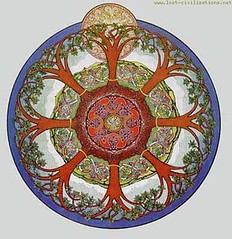
And like this:
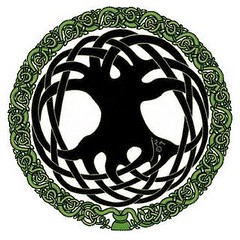
In Martín Prechtel’s school, Bolad’s Kitchen, we are asked to learn our ancestral languages, and the languages of our ancestor’s enemies, who usually turn out to be our ancestors as well. Maybe someday I will go to each place on the planet and feel the language of that place rise up in me. Until then, there is Rosetta Stone.
Tags: Dancing Through Life
“Judge not thy precious self.”
These words have been my guide over the last two weeks.
They were chosen at random from the focus basket for the last Nia class I taught before my recent trip to New Mexico with my husband to study with our teacher, Martín Prechtel, at his school, Bolad’s Kitchen.
These words became my personal focus for the practice of dancing though life, for the practice of wrestling the demons of shame who push us into narrow places, hungry to fill their bellies, casting their all-or-nothing spell again and again in an attempt to deflect attention from their own broken heartedness.
These words became the ballast for the boat of my wanderings in the wide and deep sea of the holy.

They became the light of the stars, shining in their constellations, circling overhead, circling underfoot and circling inside my chest, keeping rhythms of time so much vaster than my worries and insecurities, sustaining a view so grand I can see what I love illuminated before me, bioluminescent in the water, splashing, wriggling, calling, so loved and so in love that what eats at me falls in love, too.
In the Nia practice of FreeDance, Stage 6, is called, “Witness — Observe, Do Not Judge, Interfere or Manipulate.” We witness what is happening in the body in motion.
My hope is that, now that I’m back home, I can sustain this focus, “Judge not thy precious self,” for my ongoing practice of dancing through life, witnessing ebb and flow, narrow and spacious, pleasure and pain, the strange, beautiful and precious gift of living life in a body.
Tags: Dancing Through Life · Ongoing Nia Classes






 The Mouse and His Child, by Russell Hoban, illustrated by David Small
The Mouse and His Child, by Russell Hoban, illustrated by David Small









 The lungs are called the bronchial tree. They are a Tree of Heaven because the tree is rooted in the air above. As we breathe, the air flows down — through the trunk of the throat and bronchii into the center of the chest, nestling up next to the heart. From there, bronchial tree branches deeply into the body. The smallest twigs are called bronchioles, and the end of which are the alveoli, where gas exchange takes place. The alveoli look like bunches of grapes! There are about 600 million alveoli in the body.
The lungs are called the bronchial tree. They are a Tree of Heaven because the tree is rooted in the air above. As we breathe, the air flows down — through the trunk of the throat and bronchii into the center of the chest, nestling up next to the heart. From there, bronchial tree branches deeply into the body. The smallest twigs are called bronchioles, and the end of which are the alveoli, where gas exchange takes place. The alveoli look like bunches of grapes! There are about 600 million alveoli in the body.








